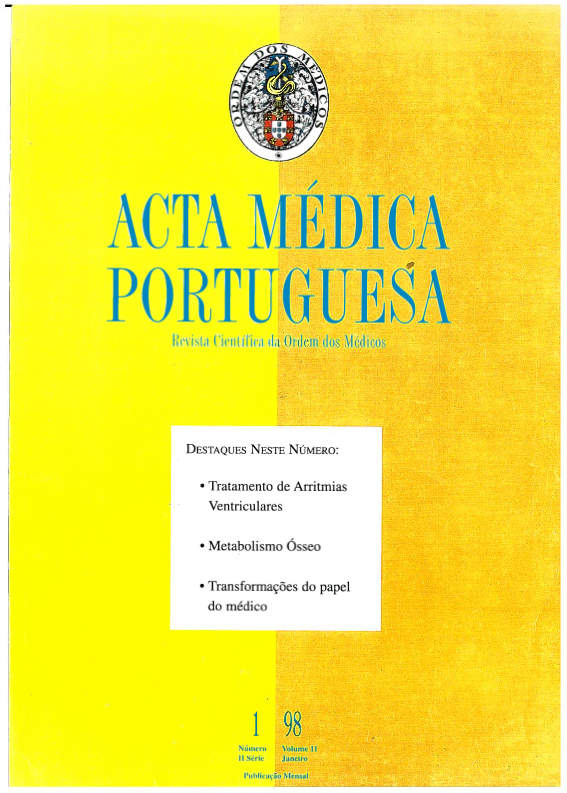Aracnoidite adesiva lombar.
DOI:
https://doi.org/10.20344/amp.2199Resumo
Spinal arachnoiditis, an inflammatory process involving all three meningeal layers as well as the nerve roots, is a cause of persistent symptoms in 6% to 16% of postoperative patients. Although spinal surgery is the most common antecedent associated with arachnoiditis, multiple causes have been reported, including infection, intrathecal steroids or anesthetic agents, trauma, subarachnoid hemorrhage and ionic myelographic contrast material--both oil soluble and water soluble. In the past, oil-based intrathecal contrast agents (Pantopaque) were associated with arachnoiditis especially when this material was introduced into the thecal sac and mixed with blood. Arachnoiditis is apparently rarely idiopathic. The pathogenesis of spinal arachnoiditis is similar to the repair process of serous membranes, such as the peritoneum, with a negligible inflammatory cellular exudate and a prominent fibrinous exudate. Chronic adhesive arachnoiditis of the lower spine is a myelographic diagnosis. The myelographic findings of arachnoiditis were divided into two types by Jorgensen et al. In type 1, "the empty thecal sac" appearance, there is homogeneous filling of the thecal sac with either absence of or defects involving nerve root sleeve filling. In type 2 arachnoiditis, there are localized or diffuse filling defects within the contrast column. MRI has demonstrated a sensitivity of 92% and a specificity of 100% in the diagnosis of arachnoiditis. The appearance of arachnoiditis on MRI can be assigned to three main groups. The MRI findings in group I are a conglomeration of adherent roots positioned centrally in the thecal sac. Patients in group II show roots peripherally adherent to the meninges--the so called empty sac. MRI findings in group III are a soft tissue mass within the subarachnoid space. It corresponds to the type 2 categorization defined by Jorgensen et al, where as the MRI imaging types I and II correspond to the myelographic type 1.Downloads
Downloads
Como Citar
Edição
Secção
Licença
Todos os artigos publicados na AMP são de acesso aberto e cumprem os requisitos das agências de financiamento ou instituições académicas. Relativamente à utilização por terceiros a AMP rege-se pelos termos da licença Creative Commons ‘Atribuição – Uso Não-Comercial – (CC-BY-NC)’.
É da responsabilidade do autor obter permissão para reproduzir figuras, tabelas, etc., de outras publicações. Após a aceitação de um artigo, os autores serão convidados a preencher uma “Declaração de Responsabilidade Autoral e Partilha de Direitos de Autor “(http://www.actamedicaportuguesa.com/info/AMP-NormasPublicacao.pdf) e a “Declaração de Potenciais Conflitos de Interesse” (http://www.icmje.org/conflicts-of-interest) do ICMJE. Será enviado um e-mail ao autor correspondente, confirmando a receção do manuscrito.
Após a publicação, os autores ficam autorizados a disponibilizar os seus artigos em repositórios das suas instituições de origem, desde que mencionem sempre onde foram publicados e de acordo com a licença Creative Commons









